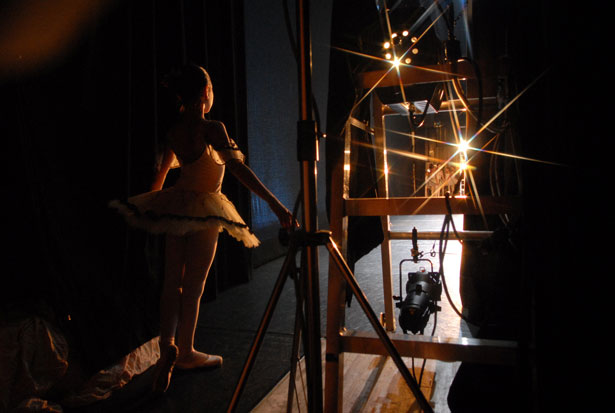The more my organization has become focused on community engagement, the more we've balanced being experience producers with being experience co-creators/facilitators. We still produce exhibitions, events, and educational programs for an audience, but that audience is just one of our major constituencies. The partners we work with--to catalyze projects within and beyond our walls--are just as important as our visitors to fulfilling our mission. Relative to other museums, I think we spend less time producing an "onstage" experience and more time collaborating with community organizations behind the scenes to empower them to produce.
I feel great about this approach. It enables us to authentically and meaningfully involve diverse people in the museum, empowering them as creative agents, building community together, and leveraging their passion to reach more (and more diverse) people.
But this approach leads to a strategic puzzle as we consider our future as an institution. Our museum is growing, and I'm always weighing different ways to expand our impact. Should we focus more on empowering and connecting partners behind the scenes, becoming more of a resource to creative colleagues across our community? Or should we focus more on what's onstage for our growing audience of participants--empowering and connecting them?
But this approach leads to a strategic puzzle as we consider our future as an institution. Our museum is growing, and I'm always weighing different ways to expand our impact. Should we focus more on empowering and connecting partners behind the scenes, becoming more of a resource to creative colleagues across our community? Or should we focus more on what's onstage for our growing audience of participants--empowering and connecting them?
In behind-the-scenes mode, we could devote more resources to supporting projects beyond our building, content area, and program formats. I see how we extend our impact and build community through dedicated partnerships, thoughtful bridge-building, and advocacy work. If we can help other sympatico organizations achieve their goals--while advancing our goals and mission along the way--that's powerful.
On the other hand, in onstage mode, we could present more highly visible opportunities for people to be empowered and connected through art and history. I see how we ignite excitement, curiosity, and community pride through powerful exhibitions, compelling stories, and dynamic festivals. We could do the work directly with more people, achieving impact with those participants and serving as a model for others interested in this kind of work. If we can make our mission more overt for more people, that's powerful too.
I've been trying to think of examples of superlative organizations of each type. I think of Springboard for the Arts, Alternate Roots, and A Blade of Grass as leaders from behind the scenes. They all merge clear, radical visions with innovative work to empower other organizations to manifest those visions. They are funded primarily by foundations (or are foundations themselves). They exist to improve for their fields or their communities, but not primarily through direct service. We need more empowerment in this world, and these institutions offer it.
Leading onstage institutions are more publicly-known and recognized. I'd put the Exploratorium, the American Visionary Art Museum, and the New World Symphony in this category. All of these organizations provide mind-blowing audience experiences and serve as inspiring models for their fields. By being onstage as visible, powerful beacons of a particular methodology, they both engage audiences and inspire other institutions to consider adopting some of their approaches. We need more magic in this world, and these institutions offer it.
Leading onstage institutions are more publicly-known and recognized. I'd put the Exploratorium, the American Visionary Art Museum, and the New World Symphony in this category. All of these organizations provide mind-blowing audience experiences and serve as inspiring models for their fields. By being onstage as visible, powerful beacons of a particular methodology, they both engage audiences and inspire other institutions to consider adopting some of their approaches. We need more magic in this world, and these institutions offer it.
And then, of course, there are many organizations that do both. Some are huge institutions, publicly known for onstage work but flexing serious behind-the-scenes muscles; for example, the San Diego Zoo and Monterey Bay Aquarium are both best-in-class for visitor experiences AND for conservation research and advocacy behind the scenes. Children's Museum of Pittsburgh is a terrific place to visit AND a leading force in diverse regional projects to support youth development. There are mid-sized and smaller organizations--like my museum and many, many others--balancing a public visitor experience with community service behind-the-scenes.
Do we have to choose one or the other? Not exclusively. But I think it's an important strategic question--one that could provide real focus and direction to our future growth. If we had to choose, would we focus on engaging visitors or empowering partners? Would we manage more sites directly, or would we support others in getting their sites off the ground? How can we make these decisions in service of our mission and our vision of a stronger, more connected community?
Where do you start in considering these questions?



No comments:
Post a Comment